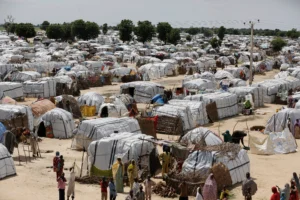Amid growing population, Saudi Arabia will need additional 20000 hospital beds by 2030, experts say

Saudi Arabia will need an additional 20,000 hospital beds by 2030 to tackle shortages and meet the needs of its growing population amid the Kingdom’s rapidly expanding real estate and infrastructure projects, experts say.
Mansoor Ahmed, director for health care, education and PPP at Colliers International, has unveiled the latest report by the advisory firm on the healthcare landscape in the country.
It says Saudi Arabia – one of the largest healthcare markets in the region and the biggest in the GCC – has a population of 36.5 million which, combined with the country’s ambitious Vision 2030 plans, is driving fundamental structural changes across the Kingdom’s economy, including healthcare.
By 2030, Colliers predicts that Saudi Arabia’s population – currently made up of 61 percent local residents and 39 percent expatriates – is estimated to grow to 43.7 million by 2030.
The numbers could be a conservative estimate amid Saudi Arabia’s rapid expansion plans and a host of new infrastructure projects.
Across the country, 555,000 new residential units, more than 275,000 hotel rooms, 4.3 million square meters of retail space, and 6.1 million square meters of office space are expected by 2030, according to property consultancy Knight Frank.
This means the number of beds – which was 78,600 in 2020 – will need to expand to 98,000 by 2030, according to Colliers.
However, Ahmed said this can have attractive economic returns for investors in the Kingdom.
The average revenue per hospital bed is currently about $575,000 – a number which, with expected inflation – will rise to $782,000 by 2030.
The average annual revenue from hospital beds in the Kingdom is $45.2 billion – a number which, if surplus demands are met – will rise to $76.7 billion.
With the introduction of several legal and economic incentives, including 100 percent foreign ownership, the healthcare sector is amongst the most attractive sectors in the Kingdom offering numerous opportunities for private sector operators and investors, Ahmed said.
However, two of the biggest factors hindering the growth of the country’s healthcare sector is “the high cost of land and limited funds available for capital expenditure especially for the construction of hospitals,” according to Colliers latest white paper “Unlocking the ‘Hidden’ Value” on Financing Healthcare Projects in the Kingdom of Saudi Arabia.
Ahmed says the Kingdom is moving towards encouraging more private sector participation in the healthcare sector, however, the extent of investment required is significant. However, he says the opportunity lies in exploring existing prospects within the sector by supporting expansion programs or as to source alternative funding for new development.








